FlightGear is an open source and cross-platform cooperative flight simulator software. It also known as the world’s best free flight simulator that runs on Linux/UNIX, Microsoft Windows and Mac OS X operating systems.
Features at a glance
Key features include flight dynamics models, accurate and extensive world scenery database, detailed and accurate sky model, open and flexible aircraft modeling system, as well as moderate hardware requirements.
In addition, the program features built-in support for multiple displays, as well as a number of networking options that allow it to communicate with GPS receivers, external autopilot, external flight dynamics modules or other FlightGear instances.
Its extensive world scenery database includes over 20,000 real world airports, taxiways, directional airport lighting, accurate terrain worldwide, scenery night lighting, paged scenery tiles, sloping runways, as well as correct runway placement and markings.
Under the hood, requirements, supported OSes and availability
Savvy tech users should know that the application is written entirely in the C++ and C programming language, using OpenGL, and it requires a 3D-enabled graphics card with OpenGL drivers, a 32-bit or 64-bit 2-3Ghz class CPU and at least 512MB or RAM.
It is supported on the Linux, FreeBSD, Solaris, IRIX, Mac OS X and Microsoft Windows OSes. On Linux/UNIX it is available for download as a source archive, as well as pre-built binaries for various Linux distributions, including Ubuntu, openSUSE, Fedora, Red Hat Enterprise Linux and Gentoo, or for Solaris, FreeBSD and IRIX systems.
However, the best way to install FlightGear on your Linux distribution is to use the default Software Center or Package Manager application and the pre-built binary packages from the default software repositories (third-party repos are also provided the the community for Ubuntu distros).
Bottom line
Summing up, FlightGear is without no doubt the world’s best free flight simulator application. Be aware that this is not a game, it is a very mature and complex software project that allows anyone to learn how to operate an aircraft.
What is new in this release:
- Performance:
- Improved frame-rates on some systems from more efficient use of Uniforms
- Reduced memory occupancy for scenery tiles
- AI models are now rendered based on display size rather than range
- AI/MP models may now define objects as being part of the interior, which will not be rendered at large distances
- Usability:
- Built-in web server now includes a moving map, a screenshot grabber, and supports SVG-based panels
- In-application launcher for Mac, based on Qt5
- Graphics:
- Improved rendering of runway and other lights under ALS
- Landing and spotlight support for ALS
- Scenery:
- Improved materials XML format making customer material definition easier
- Procedural rock material definition
- JSBSim:
- Synchronization with latest JSBSim
- Highlighted new and improved aircraft:
- Extra EA-500
- North American P-51D Mustang
- Cessna Citation II
- F-14b
- Other:
- Firewall exceptions are automatically added during setup on Windows systems
- Aircraft moved to a SVN repository.
- Bug fixes:
- See our bugtracker for an extensive, yet incomplete, list of the bugs fixed in this release.
What is new in version :
- Performance:
- Improved frame-rates on some systems from more efficient use of Uniforms
- Reduced memory occupancy for scenery tiles
- AI models are now rendered based on display size rather than range
- AI/MP models may now define objects as being part of the interior, which will not be rendered at large distances
- Usability:
- Built-in web server now includes a moving map, a screenshot grabber, and supports SVG-based panels
- In-application launcher for Mac, based on Qt5
- Graphics:
- Improved rendering of runway and other lights under ALS
- Landing and spotlight support for ALS
- Scenery:
- Improved materials XML format making customer material definition easier
- Procedural rock material definition
- JSBSim:
- Synchronization with latest JSBSim
- Highlighted new and improved aircraft:
- Extra EA-500
- North American P-51D Mustang
- Cessna Citation II
- F-14b
- Other:
- Firewall exceptions are automatically added during setup on Windows systems
- Aircraft moved to a SVN repository.
- Bug fixes:
- See our bugtracker for an extensive, yet incomplete, list of the bugs fixed in this release.
What is new in version 3.2.0:
- Aircraft Modeling:
- A Failure Management Framework for FlightGear has been added
- The JSBSim flight dynamics model now has support for ground effects like bumpiness, solid-ground detection and adjusting of friction factors. Additionally, bogey type contact points sink in non-solid surfaces, making it no longer possible to ride on water.
- YASim now has versioning support. The YASim FDM now checks a version tag in it's configuration file to allow improvements to the YASim FDM without risking breaking older aircraft.
- Additional aircraft have started adopting the Canvas navigation display that was introduced with FlightGear 3.0.
- Graphics:
- Improved rendering of VASI, PAPI, runway and taxiway lights.
- Orbital rendering using textures from the NASA Visible Earth project
- Additions to the Atmospheric Light Scattering (ALS) rendering include:
- an experimental framework to render cloud shadows on the ground (requires Advanced Weather)
- a substantial extension of cloud layer visibility using impostor techniques to 150 km
- a new agriculture effect allowing to render fields without tiling artifacts
- a new forest effect to simulate managed forest, varying tree size by patch
- sparkle and fog effect on runway lights
- much improved visual appearance of rock faces
- Usability:
- An experimental aircraft package manager allows the download of new aircraft, and changing the current aircraft in-sim.
- A new internal web server (aka httpd) based on mongoose httpd has been added. It supports various AJAX requests, a screenshot server, a property tree browser, and a web-based moving map and much more.
- The integrated Map dialog now uses an azimuthal equidistant projection, for better representation in polar regions and across the International Date Line.
- Windows users are now able to use the scroll wheel in dialog lists
- Canvas System:
- Improvements to Canvas, FlightGear's scriptable 2D rendering system include
- Better performance
- MapStructure-based layers can now be customized and styled
- Support for mouse button and modifiers
- CanvasImage now supports the http:// protocol for dynamically retrieving raster images.
- An experimental Map dialog using Canvas is available under the Equipment menu.
- Canvas Layout Engine
- Nasal Scripting:
- A new fully-interactive Nasal GUI console based on Canvas has been added: Interactive Nasal Console
- the hard-coded flight path history subsystem which samples aircraft position is now exposed via Nasal.
- Documentation:
- Nasal documentation is now included,
- Highlighted new and improved aircraft:
- Boeing 757-200: Improved autopilot and additional systems, like hydraulics and pneumatic. The aircraft comes with two engine options.
- Cessna 337G Skymaster: Tuned autopilot and improved instrument stack.
- Mainair Flash 2 Alpha: Simulated weightshift-control and new wing model.
- North American P-51D: All new highly accurate external model based on factory blueprints.
- Tupolev Tu-154B2: version 3.1
- Other:
- A text-to-speech system based on flite+hts_engine has been implemented, which is used for ATIS and other messages.
- Improved loading behaviour for AI/MP aircraft
- Bug fixes:
- A serious bug was found late in the release causing large numbers of crashes. Fixing this delayed he release, but had a nice side-effect of improving performance on some systems that were previously CPU-limited.
- See our bugtracker for an extensive, yet incomplete, list of the bugs fixed in this release.
What is new in version 3.0.0:
- This new version contains many exciting new features, enhancements and bug fixes. Highlights in this release include integration of the FGCom voice communications client within the simulator, improved terrain rendering, faster scenery loading, and improved usability. This release also coincides with the release of FlightGear World Scenery 2.0 - massively improved scenery data covering the entirety of the planet and incorporating OpenStreetMap roads and detailed terrain information from a variety of sources.
What is new in version 2.12.1:
- This new version contains many exciting new features, enhancements and bug fixes. Highlights in this release include improved usability, continued development of the Canvas rendering toolkit, and improved scenery rendering.
What is new in version 2.12.0:
- Aircraft Modeling:
- A new tracking animation provides an easy way for aircraft developers to animate complex kinematic systems like gear scissors or landing gear doors attached to struts. The animation can be implemented in Blender and then exported to FlightGear.
- Environment:
- Icebergs now appear in the arctic seas.
- Deciduous trees shed their foliage if they are above the snowline, creating a convincing winter look.
- The climatic snow line moves up and down as you fly around the world.
- Basic weather is now integrated with Atmospheric Light Scattering.
- Clouds are placed more realistically when using detailed weather modelling.
- Transponder:
- The transponder instrument system has been overhauled, making it easier to use from panels, supporting Mode-S altitude encoding, and sending the important properties over multi-player. This will allow more realistic ATC interactions, since id (squawk) codes now matter! See this wiki page for more information on installing / updating the transponder installation in aircraft.
- Performance:
- Many NavCache related startup issues experienced by Windows users (lag) were resolved
- Portability:
- Portability for older systems without GLSL (shaders) support has been restored again, so that FlightGear no longer crashes on such systems.
- Atmospheric Light Scattering:
- An ultra-high quality shader has been introduced, algorithmically generating detail down to the centimetre scale.
- Autumn colors are now simulated from the middle of summer through to the beginning of winter.
- Low visibility conditions are now more realistically rendered.
- Trees move with the wind.
- Surf is now visibile below steep sea-cliffs.
- Improved performance, reduced memory occupancy
- Usability:
- The checklist feature has been expanded.
- Checklist items are color coded to indicate whether they are complete - green for those items that are complete, yellow for those that are incomplete.
- To ease cockpit familiarization, users can request that the relevant control is highlighted.
- A virtual co-pilot can execute checklist items on behalf of the pilot.
- Tutorials are auto-generated from checklists providing a virtual instructor to guide you through completing the checklist.
- A knob animation generalizes the operation of knobs and switches in the cockpits of various aircraft.
- The Weather dialog has been improved to make it easier to understand.
- Tooltips (available under the Debug menu) provide feedback that computer pilots have to miss due to an absence of audio or haptic feedback. When you hover your mouse over a switch or lever, a little window tells you the current state of the switch.
- Internationalization:
- The menu and system messages have been translated to Portuguese.
- Canvas System:
- The "canvas" system is FlightGear's fully scriptable 2D rendering system, which makes it easy for users to create new instruments, glass cockpit displays, HUDs and even dialogs and custom GUI widgets using FlightGear's built-in scripting language Nasal (which looks really similar to JavaScript).
- Canvas improvements in this release include:
- The style setter system has been reworked, style setters are now only setup once for each element type and not for each element instance as before. A static map holds the setters for each element type. Also an animation type is stored which will later allow to animate properties of Canvas elements without specifying an animation type.
- The Nasal/cppbind framework has been improved to expose more Canvas internals to Nasal space
- Canvas textures can now not only be used as aircraft/cockpit textures (instruments, MFDs) and for the HUD/GUI, but also for scenery objects. Canvas textures can now be placed on scenery objects. This allows for example creating animated signs/monitors such as a Visual Docking Guidance System.
- Enable texture repeat for Canvas images
- Improved support for displaying GUI widgets.
- Nasal Scripting:
- All methods exposed to the Nasal props module now accept an optional first parameter refering to another node by a relative path.
- SimGear's SGTimer class is now fully exposed to Nasal, see the new maketimer() API.
- Several Nasal bugs that could previously trigger a crash were fixed.
- Rembrandt:
- A growing number of aircraft are compliant with the Rembrandt rendering technique.
- AI Improvements:
- AI scenarios may now be loaded at runtime.
- A broad range of AI aircraft received a fresh paint job. The Airbus A320 and A330 have been remodelled, while some other models got improved animations.
- Air-to-air refueling has been improved:
- Pilots can now have a choice of a number of AI air-to-air refueling tankers and can select the airspeed of the tanker to match their own aircraft if required.
- Tankers are more realistic, support multiple refuelling points, configurable fuel flow rates, and the refuelling "envelope" centered on the drogue/boom position.
- The probe position on the receiving aircraft taken into account when calculating whether contact has been made.
- Refuelling difficulty is configurable in-sim by setting the distance from the drogue/boom that refuelling occurs.
- The tanker is now able report a successful contact to the pilot.
- Regional Textures:
- The following areas now include their own region-specific texturing and auto-generated models/buildings:
- Indonesia
- The Middle East
- The United Kingdom,
- The North Atlantic Islands - Faroe, Shetland, Greenland
- Madagascar
- Highlighted new and improved aircraft:
- Mudry CAP 10C
- Tupolev Tu-154B-2
- Schleicher ASW 20
- Other:
- Additional joysticks and rudder pedals are supported out-of-the-box:
- GoFlight TQ6-ADV
- Genius Metalstrike 3D
- Microsoft SideWinder Precision Racing Wheel rudder pedals
- Bug fixes:
- See our bugtracker for an extensive, yet incomplete, list of the bugs fixed in this release.
What is new in version 2.10.0:
- Improved modularization:
- Architecture improvements introduced in this release mean that subsystems such as the traffic manager may be stopped and re-started dynamically within a simulation session. In future releases it is expected that more and more subsystems will support this function, making FG more scalable, and more flexible for distributed multi-machine simulators.
- Atmospheric Light Scattering:
- Atmospheric light scattering is an alternative rendering framework, using exceptionally realistic environment-dependent fog and light computations for clouds and terrain. The simulation includes the following lighting models.
- Rayleigh, Mie and diffuse multiple scattering of light in the atmosphere, on haze and on clouds, for more realistic atmospheric lighting.
- Volumetric ground fog simulation, so fog varies in thickness both horizontally and vertically.
- Realistic ambient and diffuse light curves for sunset and sunrise conditions, making evening flights more realistic.
- Improved night VFR flying due to a moonlight illumination model.
- Together with Advanced Weather, it functions as an integrated environment simulation in which the individual elements mutually influence each other. For instance
- Clouds and winds are influenced by the distribution of terrain elevation
- Prevailing winds, terrain slopes and stability of the lower atmosphere determine the shape of visible clouds
- Cloud layers and haze influence color and intensity of light reflections
- Winds influence wave patterns on water
- Light at sunrise and sunset is position and altitude dependent, allowing for phenomena such as Alpenglow or brightly illuminated high-altitude clouds while the ground is dark
- For more powerful graphics cards, the framework includes procedural terrain texturing, including features such as the following.
- Non-tiling slope dependent terrain texturing, so scenery looks more featured but with fewer tiling artefacts.
- High resolution close-up texturing effects with up to 10 cm detail resolution and dynamically added bumpmap for low-level flight and better depth perception
- Environmental effects such as terrain wetness (including puddles), dustiness, mossiness, and snow cover. All adjustable by the user and respecting the terrain slope where appropriate.
- Improved performance, reduced memory occupancy:
- Startup time and memory occupancy has been reduced by the implementation of a cache of navigation data. Further memory occupancy reductions have been made by improved random buildings. Frame-rates have been improved when using 3D clouds, particularly in overcast conditions.
- Usability:
- A new tool allowing joystick configuration in-sim, making it easier for new users to configure their joysticks as they wish and get flying!
- The Nasal Console has been improved to support copy/paste, making Nasal script development easier.
- The About dialog now includes additional system information, and the ability to copy information to the clipboard, making remote diagnosis of users problems faster and more straightforward.
- The Select Airport option now displays an overhead view of the selected airport, allowing users to preview their new location, and making it easier to choose the correct runway or parking position.
- In-sim checklists have been introduced for a number of aircraft.
- An in-sim documentation browser is included, so users can more easily browse all the documentation available in the base package.
- The weather configuration UIs have been combined and rationalized into a single weather UI, making it easier to select a nice VFR day, or a difficult CATIII approach.
- Flight path can now be displayed on the in-sim map.
- Instant replay may now be saved as a flight recorder, edited externally to add a commentary, and then replayed as a tutorial, with the user able to take control at any point.
- Multiplayer setup dialog now includes a dynamically generated list of active MP servers, making it even easier to take part in FlightGear's worldwide multi-player environment.
- Internationalization:
- FlightGear continued to benefit from contributions from across the globe.
- The FlightGear Manual is now included in both English and French.
- System messages on startup are available in eight languages, just like the in-sim menu.
- Flight Planning and Route Manager:
- Route Manager now has better support for Navigraph procedures.
- Auto-generated SIDs and STARs are available for airports where real procedure data is not available. This generates plausible straight in approach and terminal waypoints based on the route course.
- The "flightplan" Nasal extension function has been improved, making it possible to retrieve a hash representation of the flight plan stored in the route manager. It is now possible to directly show a SVG image for each waypoint and connect them using OpenVG paths.
- Canvas System:
- The "canvas" system is FlightGear's fully scriptable 2D rendering system, which makes it possible for users to easily create new instruments, HUDs and even dialogs and custom GUI widgets using FlightGear's built-in scripting language Nasal (which looks really similar to JavaScript). The Canvas can also be used for the creation of complex glass cockpit displays like navigational displays and other MFDs, none of this requires rebuilding FlightGear from source or writing C++ code.
- Canvas improvements in this release include:
- Lazy updating/rendering to improve performance in situations where a texture doesn't need to be redrawn
- Creating GUI windows, including popup menus or menubars
- Native copy/paste via 2 new Nasal extension functions
- Nested canvases, where a canvas may contain images created by another canvas texture
- Window stacking
- raster images (vector images were already supported)
- Improved event handling GUI events using osgGA
- A new DOM-based event handling system
- Rembrandt:
- The Rembrandt renderer has been extended with a number of post-processing filters:
- Night vision including amplification grain and restrained field of view
- Cinema effect including:
- Vignetting
- Color shift, with Sepia as default value
- Radial distortion (barrel and pincushion distortion, with scale compensation)
- Lateral chromatic aberration (purple fringing)
- Film wear simulation
- Additional aircraft have been updated to make use of Rembrandt effects.
- AI Improvements:
- AI aircraft take-offs and landings are now more realistic.
- AI tankers can now be found using the HUD target marker.
- Regional Textures:
- Building on the work in 2.8, the following areas now have region-specific texture-sets for more realistic terrain:
- Caribbean
- Western Europe
- Iceland
- Tropical South America
- Highlighted new and improved aircraft:
- The Boeing 777 has improved cockpit, PFD and NavDisplay.
- The Dassault Mirage 2000-5 has various instrumentation, HUD and stores added.
- The Douglas A-4F Skyhawk has an improved FDM and cockpit, including terrain-clearance radar and navigational computer.
- The Hawker Hurricane has improved FDM and cockpit.
- The Mudry Cap 10B, a classic French two-seat training aerobatic aircraft has been added by the PAF team.
- Other:
- Additional joysticks and rudder pedals are supported out-of-the-box.
- An interactive aircraft download page allows users to filter aircraft based on their level of completeness and accuracy, making it easier to discover the true gems of our extensive hangar.
- Bug fixes:
- See the bugtracker for an extensive, yet incomplete, list of the bugs fixed in this release.
What is new in version 2.8.0:
- V2.8.0 includes improvements making FlightGear world more realistic than ever before. Placement of random buildings and trees match the underlying terrain texture, and urban areas now have denser random buildings. Textures can be region specific, and users can select between summer and winter textures in-sim. An improved atmospheric scattering and terrain haze model means the lighting of the terrain is more realistic. Finally, a new automated system is now available for scenery submissions that automatically get rolled into the scenery distribution to be enjoyed by everyone.
- A very exciting new addition is "Project Rembrandt". This is still considered experimental and not enabled by default. This enables real-time shadows, and support for multiple light sources such as landing lights. Even rotating beacons illuminate the surroundings correctly.
- Founded in 1997, FlightGear celebrated the 15th anniversary of it's first official release in July. FlightGear is developed by a worldwide group of volunteers, brought together by a shared ambition to create the most realistic flight simulator possible that is free to use, modify and distribute. FlightGear is used all over the world by desktop flight simulator enthusiasts, for University research and education, for a variety of aerospace engineering and visualization work in industry, and even for interactive exhibits in museums.
- FlightGear features more than 400 aircraft, a worldwide seamless scenery database, a multi-player environment, detailed sky modelling, a flexible and open aircraft modelling system, varied networking options, multiple display support, a powerful scripting language, and an open architecture. Best of all, being open-source, the simulator is owned by the community and everyone is encouraged to contribute.
What is new in version 2.6.0:
- Aircraft operations:
- At selected airports, FlightGear can automatically start at an appropriate parking spot based on the size and type of your aircraft.
- At airports which support this feature, a visual display of the taxi route on the ground guides you to the active runway, while following the correct taxiways.
- AI system:
- To reduce stuttering during model loading and take further advantage of multi-core CPUs, MP and AI aircraft models are now loaded in a background thread.
- To reduce load times still further, only the parts of the aircraft currently visible are loaded from disk.
- AI and multiplayer aircraft are no longer silent objects, they can produce sounds just like the main aircraft.
- AI Traffic:
- Many new and updated AI aircraft and liveries. Over 80 airlines now populate the virtual skies.
- The range at which AI aircraft are displayed is now configurable, allowing you to tune FlightGear for best performance.
- AI controlled pilots have received extensive landing training and now make a more realistic approach and vacate the runway when able.
- The simulator now assigns an available parking position on startup.
- Flight dynamics:
- The JSBSim flight dynamics model received a major overhaul.
- Environment:
- The Local Weather package has been further integrated with the FlightGear core, and has been renamed "Advanced Weather". New rendering techniques allow more detailed clouds with no performance impact. High altitude clouds are rendered more realistically, and clouds move with the wind without impacting performance.
- Interface:
- New replay system. Video-player like controls, including slow motion and fast forward. Pilots can now take over the aircraft at any time during a replay. Great for training particular flight phases such as approach over and over again.
- Aircraft status ratings are displayed in the FlightGear launcher, allowing you to see at a glance the FDM, model, systems and cockpit quality for rated aircraft.
- Multiplayer settings can be accessed in-sim. You can now choose your callsign, select an MP server and connect within the simulator.
- Automatic scenery download is now even easier to use. Simply select the scenery directory to download to, and switch it on.
- Individual graphics effects can now be configured from within the Rendering Settings dialog, allowing you to fine-tune the performance of FlightGear within the sim.
- The simulation of radio signal propagation has started and will make the reception of ATC messages and navigation aids more realistic in the future.
- A new set of options makes it easier to create seamless and zoomable multi screen setups.
- A new performance monitor shows the time spent in each subsystem.
- Highlighted new and improved aircraft:
- A-26 Invader: cockpit improvements.
- Boeing 777-200ER: many additional and updated features, including autopilot, instrument displays and animations.
- Douglas DC-3/C-47
- Polikarpov I16: cockpit improvements.
- Project infrastructure:
- CMake is now the official build system on Linux, Mac and Windows.
- Scenery improvements:
- Detailed scenery is available for various areas in Europe, based on the CORINE data set.
- Visual effects:
- The sea now looks more realistic. Waves align with the wind, and foam appears at high wind speed.
- Steep slopes now appear rocky.
- Runways now appear wet during rain showers.
- To help aircraft developers, a single shader combining bump-map, specular, reflection and light mapping components is now available.
- Other:
- Additional joysticks and rudder pedals are supported out-of-the-box, including the Logitech WingMan Interceptor, Saitek Pro Combat Rudder Pedals and Thrustmaster HOTAS Warthog.
- FGPanel, lightweight software to render 2D instrument panels, is now included as part of the release.
What is new in version 2.0.0:
- FlightGear 2.0.0. reflects the maturation of the OpenSceneGraph port that started with the vious 1.9.0 release. In addition to many internal code improvements, FlightGear 2.0.0. marks the introduction of many new exciting improvements in the graphics and sound system, as well as improved usability of key features, and improved behavior of existing features. Highlights of this new version include:
- Sound:
- Complete Overhaul of the Sound Code
- doppler effects
- distance attenuation
- 3D positional sound sources
- assignment of sound sources to external objects (i.e. AI controlled aircraft)
- User selection of the sound device
- Visual Effects:
- Use of Shaders for dynamic textures
- Use of Effects files
- Improved 3D Clouds
- Color changes based on Humidity and other whether effects allow for very dramatic lighting conditions
- Dynamic water textures
- Usability:
- Allow screenshots in more common file formats
- User selectable sound device
- More intuitive selection of the weather settings through the GUI and/or commandline
- Infrastructure:
- Airport Geometry data can be read from the scenery, allowing for more flexible regeneration of terrain tiles
- Internals:
- Improved efficiency of the property tree
- A more effient ground cache
- Many improvement to the RouteManagement code
- Removed many compiler warnings
- More realistic Atmosphere model (John Denker)
- Behavior:
- More realistic ILS behavior (James Turner)
- Autopilot Improvements (Torsten)
- A generic autobrake function
- Winds over mountaineous areas cause up- and downdrafts that can be used for gliding
- More realistic behavior of the route manager
- Wild fires, which can be extinquished by firefigherplanes operating across the multplayer server
- Navaid frequencies and radials can be transmitted to Atlas
- Utilities:
- A python script to visualize Yasim configurations in Blender
- AI:
- Allow traffic departing and arriving at the same airport
- Add support for High-Speed Trains
- ATC interactions between AI aircraft and ground controllers
- Performance characteristics of AI aircraft can be specified in a performance database
- Push-back vehicles are available for a selected number of aircraft
- AI escorts (???: Ask Vivian)
- Improved Radar functionality (Vivian)
- AI objects are now solid (i.e. users can collide with them)
- Some liminary support for SID/STAR procedures for AI aircraft
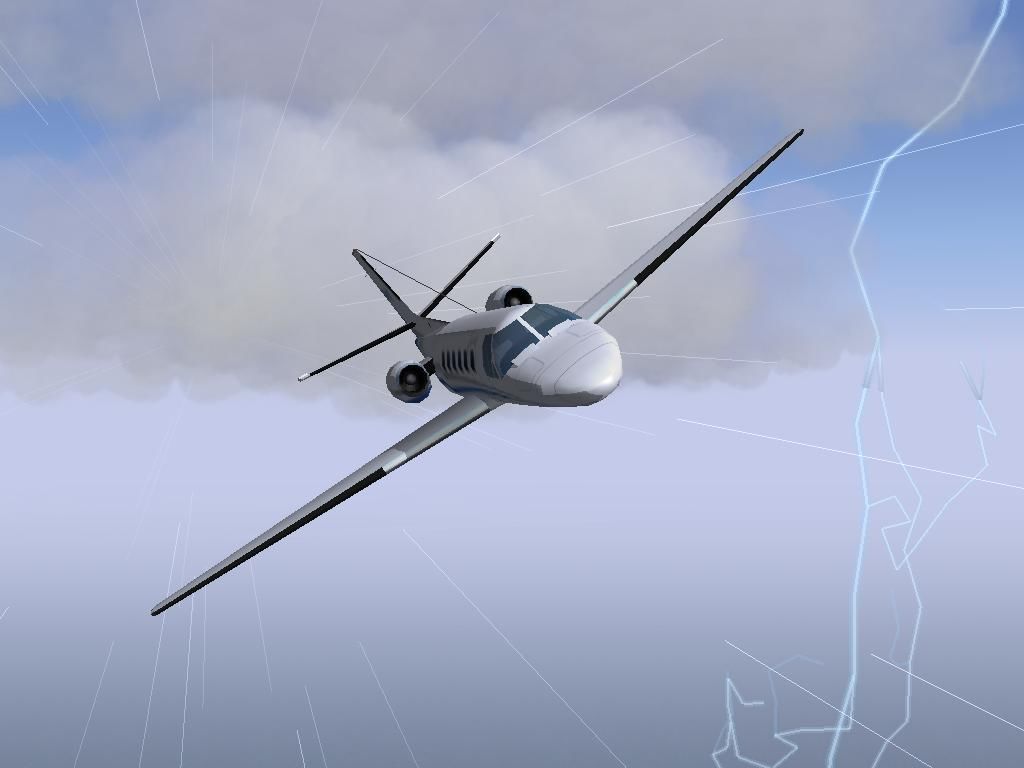
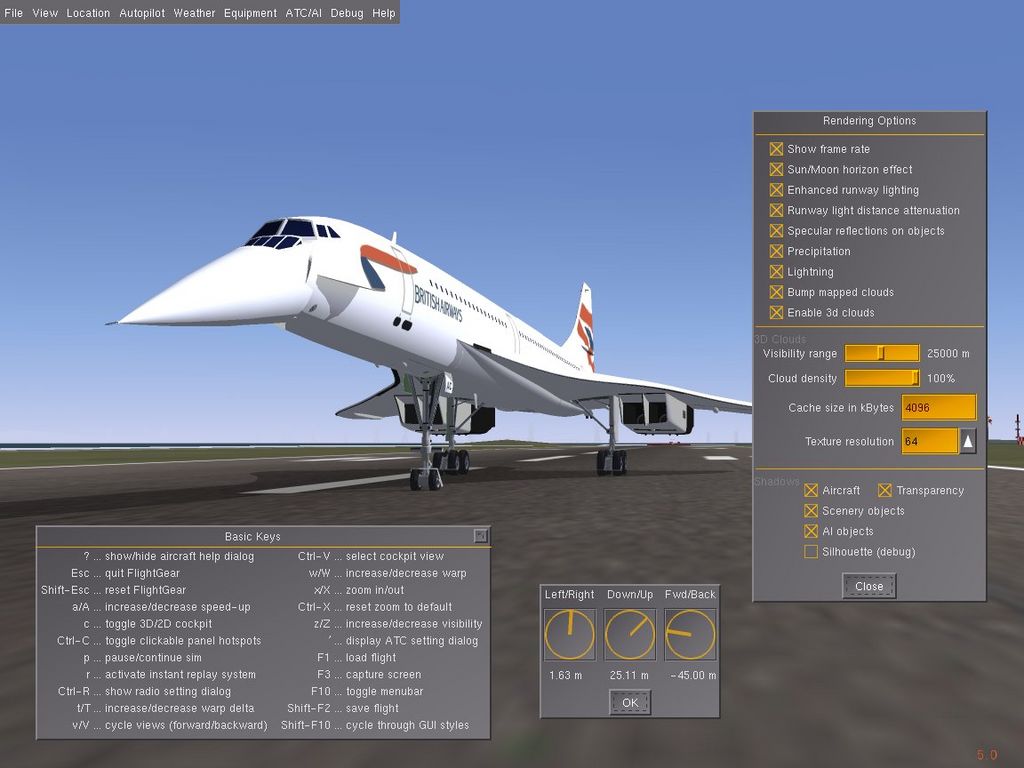
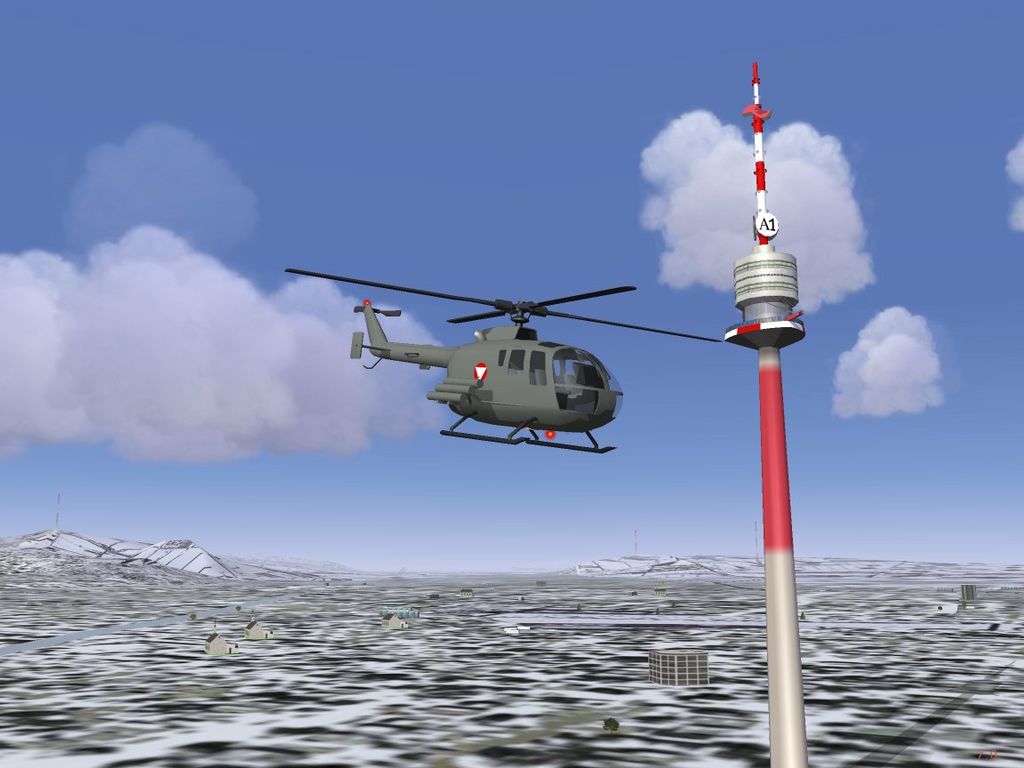
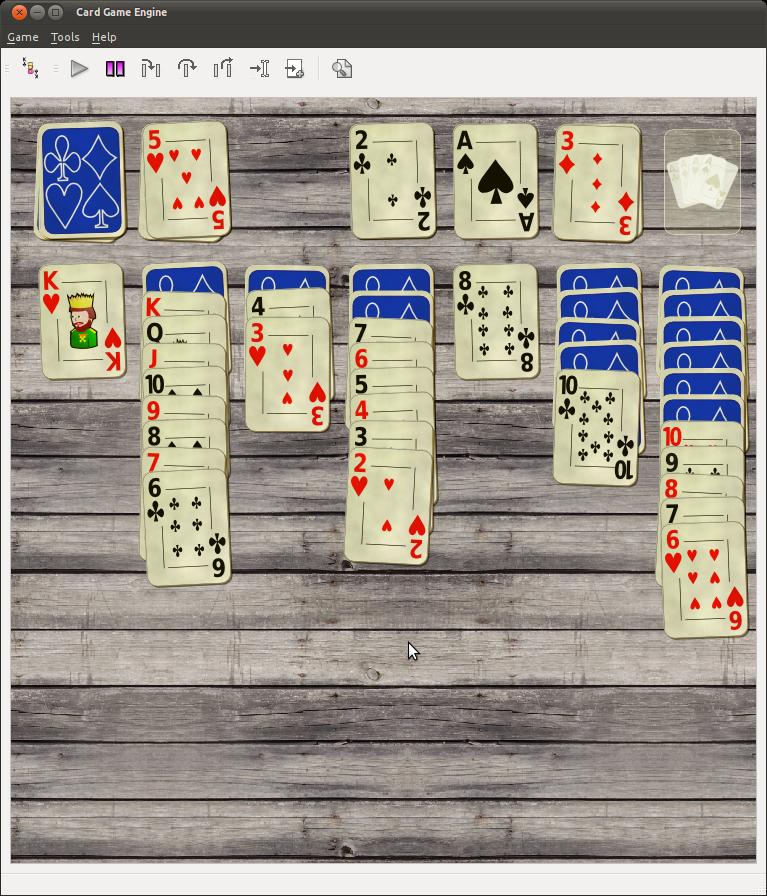

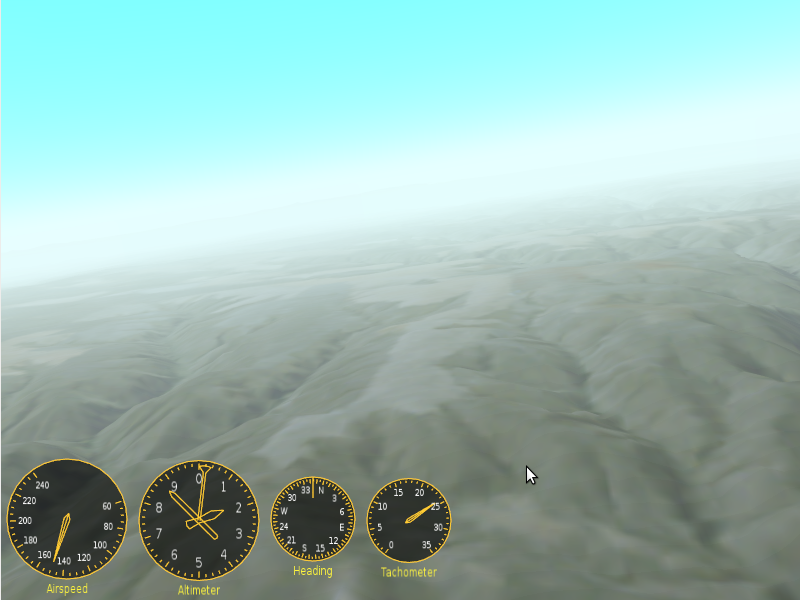
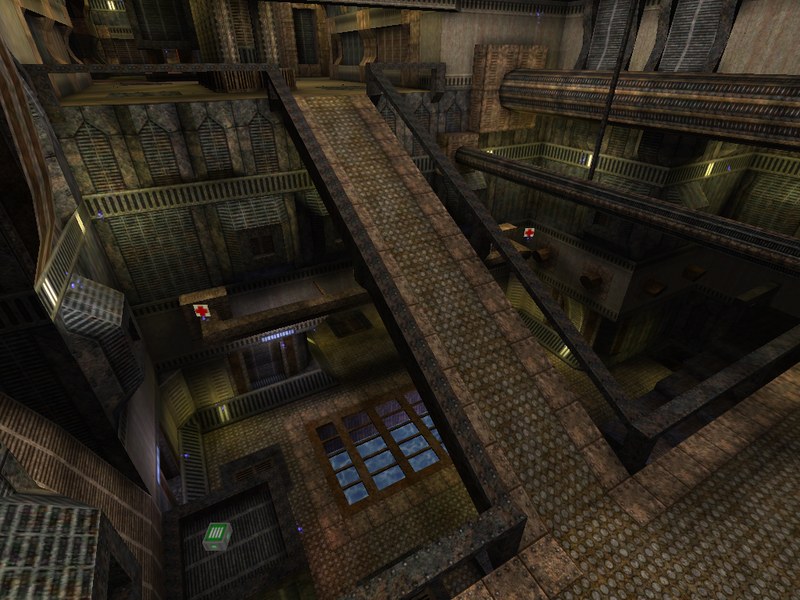
Comments not found